Key takeaways:
- Educating children about dental health and nutrition helps them make better choices, such as understanding the impact of sugary and acidic foods on their teeth.
- Involving children in meal planning and preparation fosters a connection to healthy eating, encouraging them to try new foods.
- Positive reinforcement and tracking dental hygiene habits, such as brushing, builds a foundation for lifelong oral care practices.
- Modeling healthy behaviors as a parent significantly influences children’s choices and helps establish good eating and dental hygiene habits.
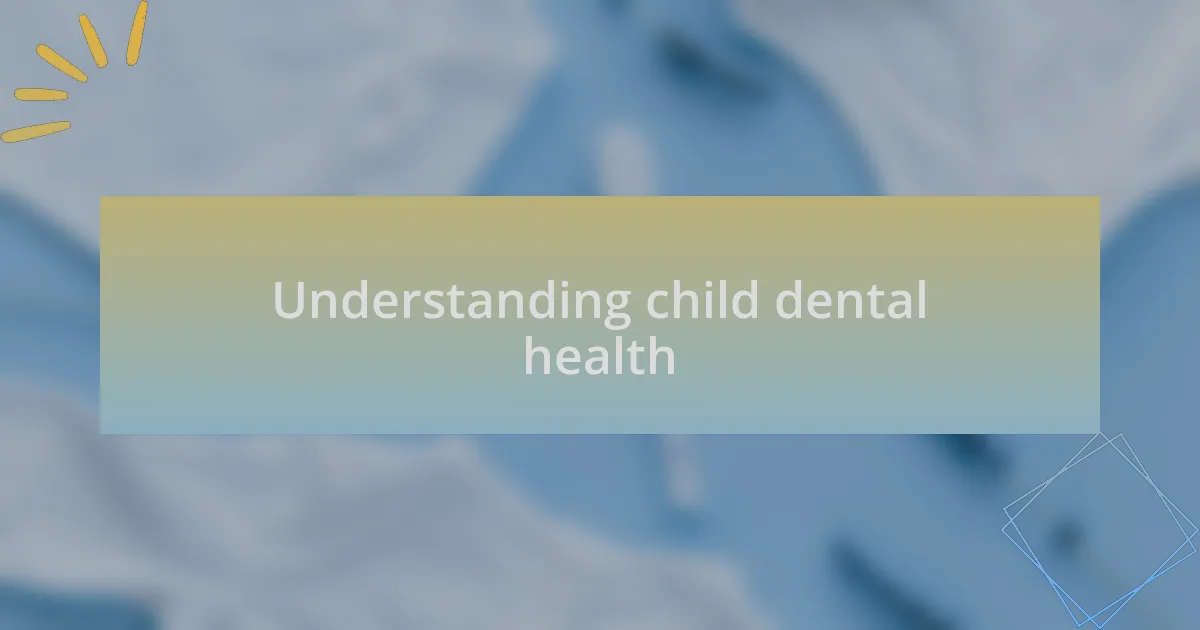
Understanding child dental health
Understanding child dental health is a multifaceted journey. When I first started to pay attention to my child’s oral hygiene, I realized that their dental health affects more than just their smile. I often wondered how something as simple as a sugary snack could lead to cavities and discomfort.
For instance, one day, during our regular family game night, I noticed my child hesitating, touching their mouth with a frown. It turned out they had been hiding a toothache caused by too many caramel treats. This experience taught me how vital it is to educate children about balance and making healthier choices.
Moreover, I found that regular dental check-ups also play a crucial role. They provide an opportunity not just for professional cleaning, but also for learning. How can we expect our kids to understand the importance of brushing and flossing without guidance? By fostering open conversations about dental care, we empower our children to take charge of their health.
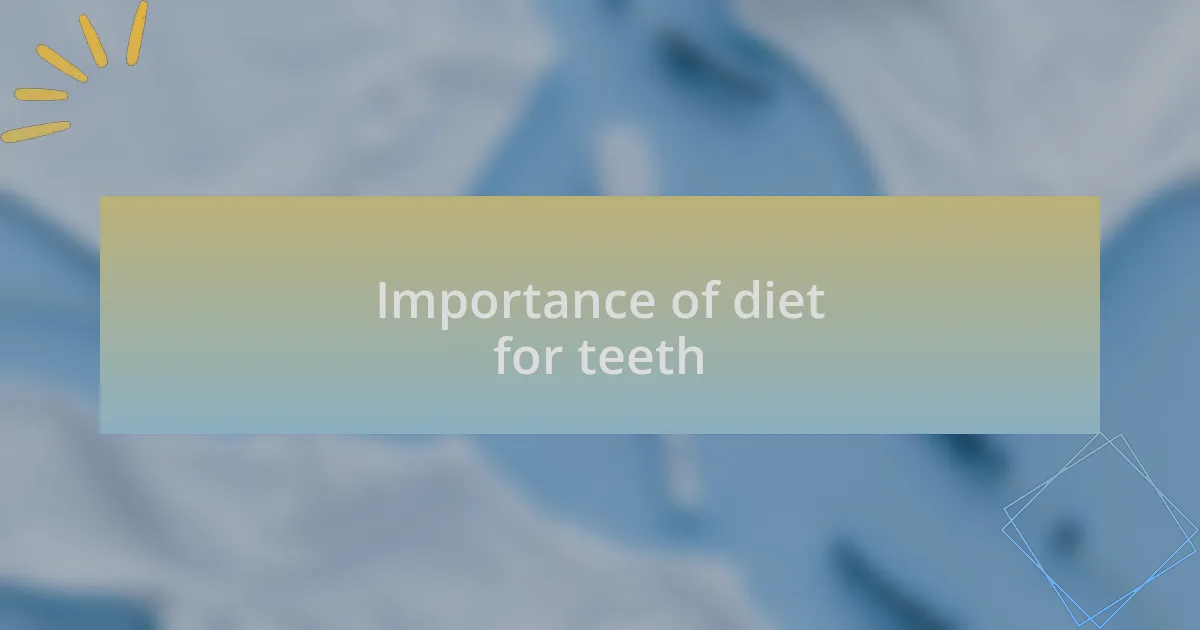
Importance of diet for teeth
A child’s diet significantly influences their dental health in ways that are often underestimated. I remember a time when my child was a bit too enthusiastic about fruit juices, thinking they were healthy enough to drink freely. It was a wake-up call when we noticed the first signs of enamel erosion. This experience made me realize that even foods perceived as healthy can harm teeth if consumed excessively.
Foods rich in sugar and acid can harm enamel, which is the protective layer of teeth. I often remind my child that while sweet treats are tempting, moderation is key. I’ve discovered that substituting sugary snacks with crunchy fruits and vegetables not only provides better nutrition but also promotes natural cleaning of teeth, making snack time a learning opportunity rather than just a reward.
The connection between diet and oral health extends beyond immediate pleasure to long-term consequences. I often ask my child to think about how their choices today can shape their smile tomorrow. It’s a simple discussion that helps them understand the critical link between what they eat and how their teeth stay healthy, fostering awareness that I believe will last a lifetime.
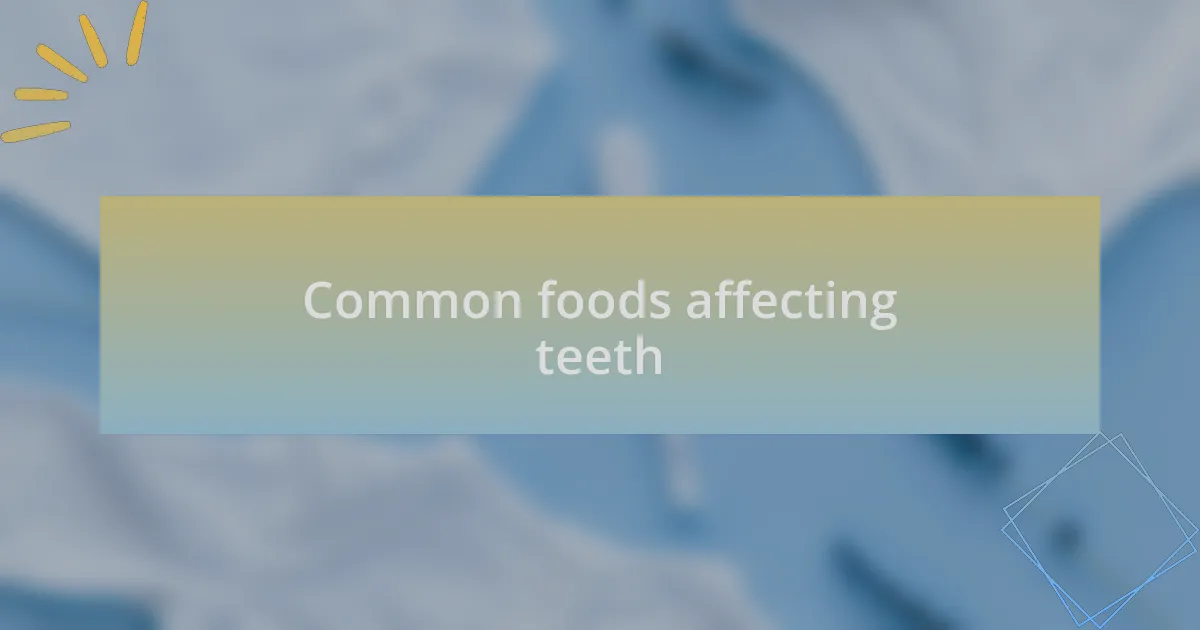
Common foods affecting teeth
Certain common foods can have a significant impact on dental health, and I’ve seen these effects firsthand. For example, I used to think that giving my child dried fruit was a smart snack choice. What I didn’t realize is that while they contain natural sugars, the stickiness of these fruits can cling to teeth and lead to decay if not brushed away promptly. Now, we take a moment each time we indulge in these treats to ensure that brushing follows shortly after.
I’ve also noticed how acidic foods can be sneaky offenders. A few months ago, my child discovered lemonades and citrus fruits, captivated by their zest. While I encourage them to enjoy fruits, I now emphasize the importance of rinsing their mouth with water afterward to neutralize the acidity. It’s a small step that has made a big difference in how I approach their diet.
And let’s not forget about sugary drinks. When we had a family gathering with plenty of sodas, I found myself reminding my child how one can of soda can carry more sugar than a child needs in a day. After seeing the excitement in their eyes start to fade into concern over cavities, I decided to make a fun challenge out of finding appealing alternatives, like sparkling water infused with fruit. It turned snack time into a learning experience, enhancing their awareness about healthy choices and their effects on dental health.
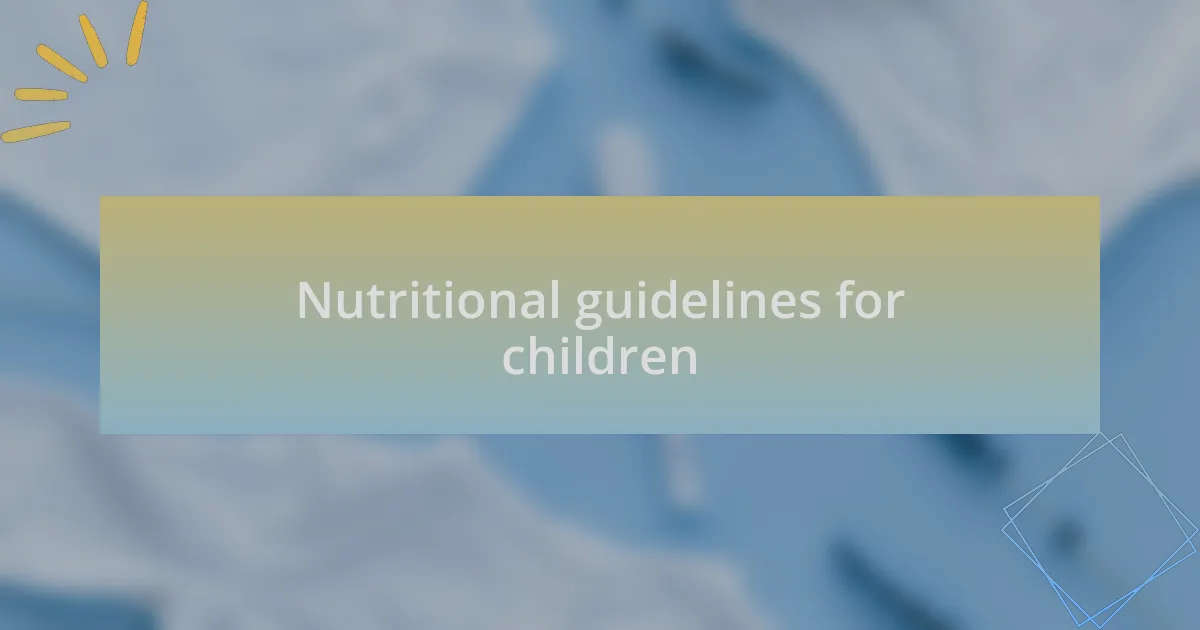
Nutritional guidelines for children
When it comes to establishing healthy eating habits for my child, I’ve found that balancing nutrients is key. I started incorporating a colorful variety of fruits and vegetables into their meals. It’s almost like creating a rainbow on their plate, which not only looks appealing but also ensures they receive the vitamins needed for strong teeth and overall health. Have you ever noticed how excited children can get when they see something vibrant and fun to eat?
Whole grains have also become a staple in our household. I remember when we swapped out white bread for whole-grain options. The transition wasn’t instant; there were a few skeptical looks at first. However, explaining how fiber benefits dental health made it easier. Whole grains help in reducing harmful bacteria and sugar levels, which is a win for their teeth.
Additionally, I’ve learned the importance of regular meal times and healthy snacks. With a busy lifestyle, it can be tempting to grab processed snacks for convenience, but I prioritize homemade snacks instead. I’ve discovered that whipping up some oatmeal cookies or yogurt with fruits doesn’t just satisfy their sweet tooth, but also fosters a sense of togetherness in our family kitchen. After all, making snacks together not only nurtures their body but also strengthens our bond, doesn’t it?

Strategies for healthier eating
One simple strategy I’ve implemented is involving my child in meal planning and preparation. When I allow them to pick out healthy recipes or help in the kitchen, it transforms the experience from a chore into an exciting adventure. I’ll never forget the pride on my child’s face the first time they made their own smoothie. Seeing their enthusiasm spurs them to try new fruits and veggies they might otherwise reject.
Another effective approach has been to introduce a variety of healthy dips alongside veggies. I remember the day I discovered how much my child loved carrot sticks when paired with hummus. It was a game-changer! This method not only makes healthy eating more enjoyable but also encourages them to explore different flavors while developing their palate.
Lastly, I’ve found that leading by example truly speaks volumes. Whenever I make a conscious effort to choose healthier options, I see my child mimicking those choices. It’s a powerful lesson in habits; one evening, after a long day, I reached for an apple instead of chips for a snack, and my child did the same! It reminds me how critical it is to model the behaviors I want them to adopt. How often do we underestimate the impact of our own choices on our children?
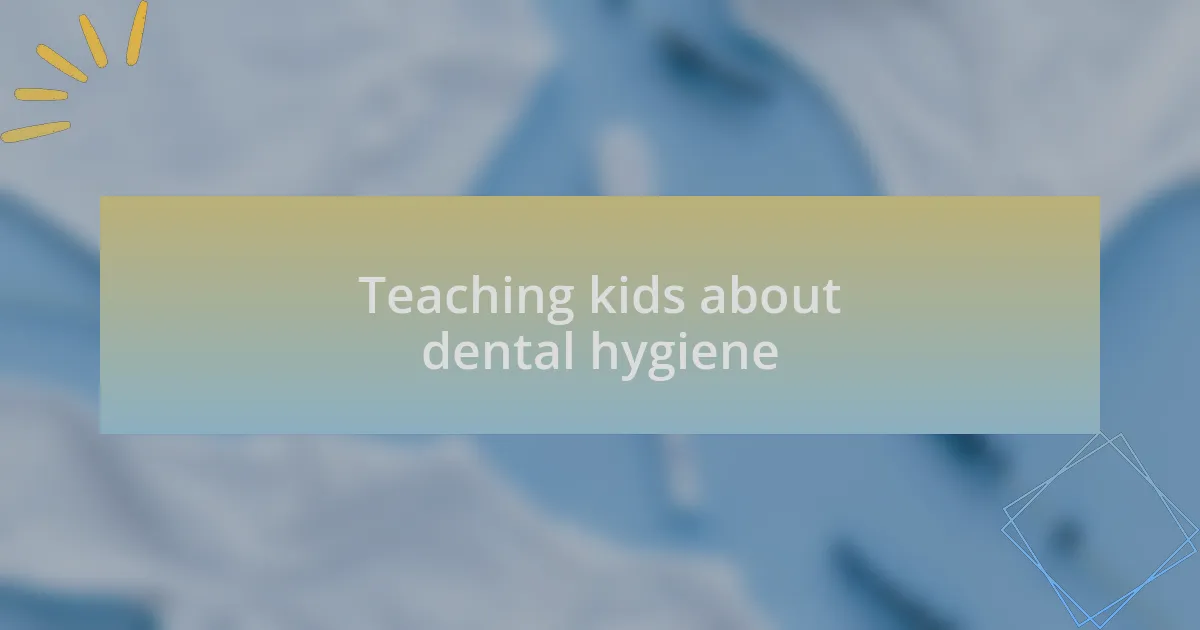
Teaching kids about dental hygiene
Teaching kids about dental hygiene goes beyond just reminding them to brush their teeth. I remember when my child first discovered a fun app that showed how bacteria can affect their smiles. It sparked so many questions: “What happens to the sugar we eat?” and “Why do we need to floss?” Teaching them about the science behind dental hygiene made them curious and motivated to take care of their teeth.
I’ve also encouraged my child to create a chart that tracks their brushing habits, which has turned into a little game for them. Each time they visit the dentist and get praise for a healthy mouth, their excitement is palpable. It’s this positive reinforcement that builds good habits. Why not celebrate the small wins, right?
Involving my child in choosing their oral care products has also been beneficial. The first time they picked out a toothpaste with a flavor they loved, it felt like a small victory. They couldn’t wait to brush their teeth! It made me realize how little choices can create a big impact. How often do we think about the preference of our kids in promoting good habits?

Personal experiences in maintaining diet
Maintaining my child’s diet has been a journey filled with both challenges and rewarding moments. There was a time when my daughter would beg for sugary snacks after school, and I quickly noticed how it affected her mood and energy levels. I decided to involve her in meal planning, and we’ve had fun experimenting with healthier options, like smoothies packed with spinach and fruits. Have you ever tried making healthy choices a fun activity? It really worked for us.
I remember one particular day when we made homemade pizza together, using a whole wheat crust and lots of fresh vegetables. As she sprinkled on the toppings, I could see her taking pride in what we were creating. It was an eye-opener for me – when kids participate, they become more invested and adventurous about trying new foods. Who knew a simple pizza night could be a step toward better eating habits?
Staying consistent with healthier choices hasn’t always been easy, especially when her friends come over with their tempting snacks. I’ve learned to keep healthy alternatives ready, like popcorn mixed with a bit of cheese or yogurt with fruits. How do you handle those situations? For me, it became a matter of balance; since I’d rather teach her to make better choices in moderation rather than completely restrict her, which fosters an ongoing conversation about nutrition and its impact on her teeth.